Are you considering drafting a negligence liability waiver and not sure where to start? Writing a letter can feel daunting, but it doesn't have to be complicated. This simple template will guide you through the essential elements needed to request a waiver effectively while ensuring clarity in communication. Let's dive into the details to help you craft the perfect request!
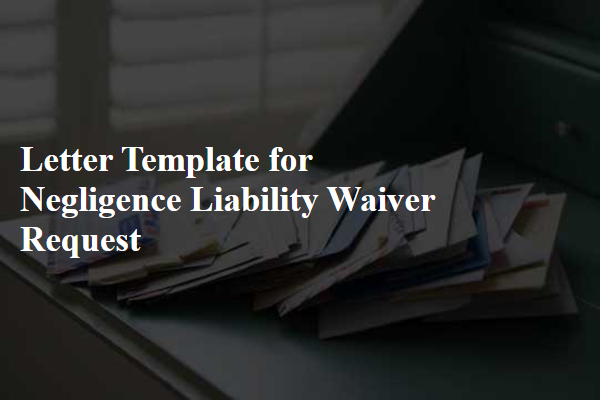
Legal Terminology
The negligence liability waiver request serves as a legal document designed to limit the responsibility of an entity, typically an organization or service provider, for any potential harm or damages that could occur during a specified activity or event. This waiver usually includes key components such as an explicit statement of risk, clearly enumerated potential hazards associated with the activity, and a signature line for participants, indicating their understanding and acceptance of the associated risks. Furthermore, the waiver may reference statute laws, such as those pertaining to personal injury claims, and outline the governing jurisdiction, ensuring that any disputes arising from the agreement are managed according to local legal frameworks. Specific languages such as "release of liability" and "indemnification" are commonly included to reinforce the legal terms under which participants absolve the entity from negligence claims.
Parties Involved
Negligence liability waivers are often sought to mitigate risks in various activities or events involving organizations or individuals. These waivers can encompass many parties, including individuals engaging in an activity, organizations hosting events, and the vendors providing goods or services. For instance, a local sports club (XYZ Sports Club) may require members to sign a waiver before participating in recreational activities like soccer or basketball to protect against injuries. This documentation typically indicates potential risks (such as sprained ankles or concussions), making clear that participants agree to assume those risks and release the club from further liability. In contexts such as adventure tourism, companies like Adventure Tours Ltd. might ask participants to sign waivers before hiking, zip-lining, or white-water rafting, addressing inherent risks associated with outdoor activities, and ensuring that all involved parties understand their responsibilities and potential liabilities.
Scope of Waiver
A negligence liability waiver request seeks to clarify the extent of liability relinquished by the participant. The scope of the waiver typically encompasses injuries resulting from inherent risks associated with activities, such as recreational sports, physical training, or adventurous excursions, specifically location-based activities like hiking in Grand Canyon National Park or rock climbing in Joshua Tree National Park. The language of the waiver identifies potential negligent actions not covered, ensuring participants understand they forfeit claims of liability for injuries stemming from ordinary negligence but retain rights against gross negligence or willful misconduct. By signing, participants acknowledge risks, including but not limited to, accidents, equipment failure, or unexpected weather changes, thereby limiting the organizer's legal responsibility.
Risk Acknowledgment
Participating in extreme sports, such as skydiving or rock climbing, involves inherent risks such as equipment malfunction, environmental hazards, or personal injury. Participants must acknowledge that organizations like the American Parachute Association emphasize the importance of safety standards, yet accidents may still occur. Waivers often require participants to understand their responsibility for personal safety while engaging in these activities. Legal disclaimers typically outline that the organization cannot be held liable for injuries resulting from inherent risks, emphasizing personal accountability and the necessity of adhering to safety guidelines during the event. Events like these have led to discussions around insurance coverage for both participants and providers, raising awareness about the implications of negligence in potentially life-threatening situations.
Signature and Date
A negligence liability waiver request outlines the release of claims against an organization or individual, typically used in activities such as sports, events, or recreational activities. The document should clearly state the participant's understanding of the risks involved, particularly the potential for injury or loss. The waiver should also include a space for the participant's signature to affirm agreement, as well as a date to establish when the waiver was signed. Proper wording can help ensure that the waiver is legally binding and protects the organizer from negligence claims.
Letter Template For Negligence Liability Waiver Request Samples
Letter template of negligence liability waiver request for event participation.
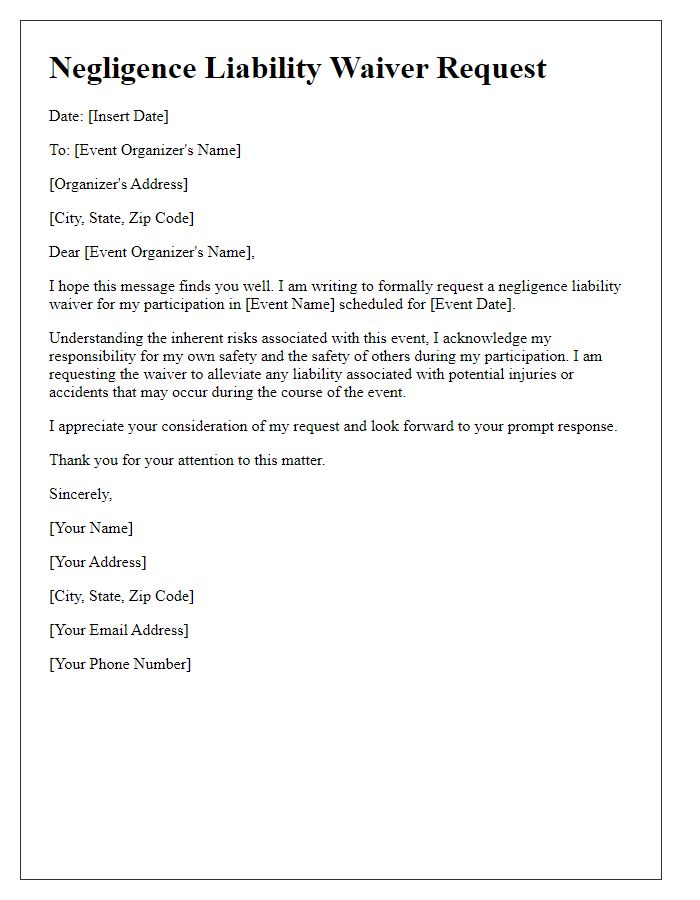
Letter template of negligence liability waiver request for sports activities.
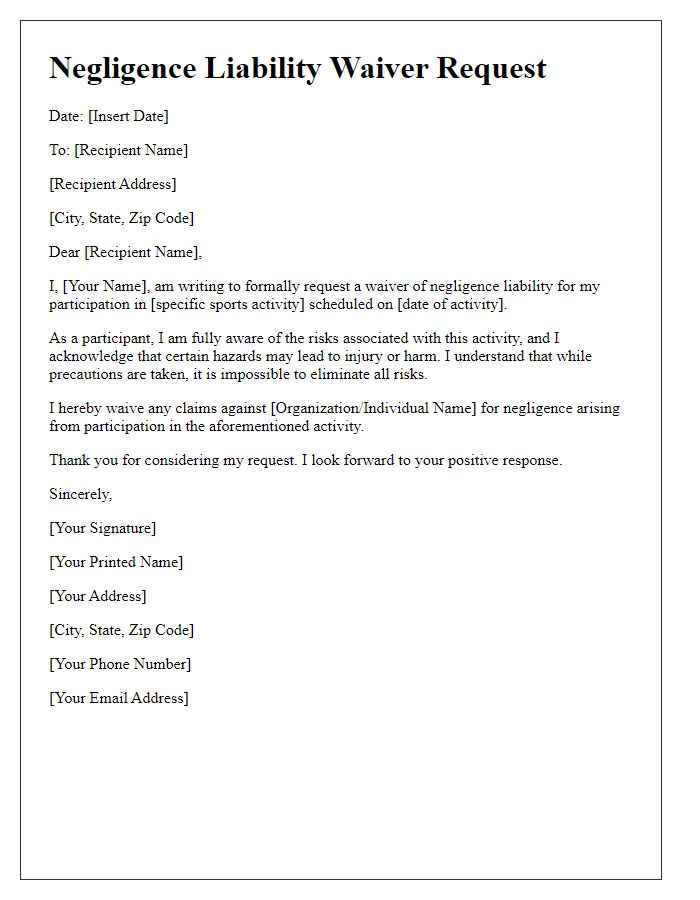
Letter template of negligence liability waiver request for volunteer work.
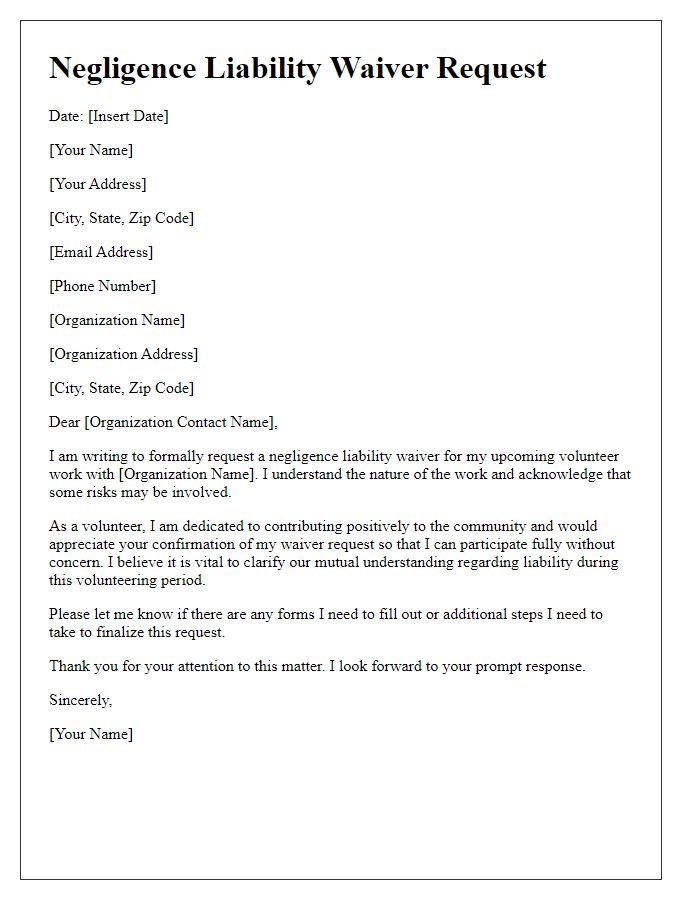
Letter template of negligence liability waiver request for workshop attendance.
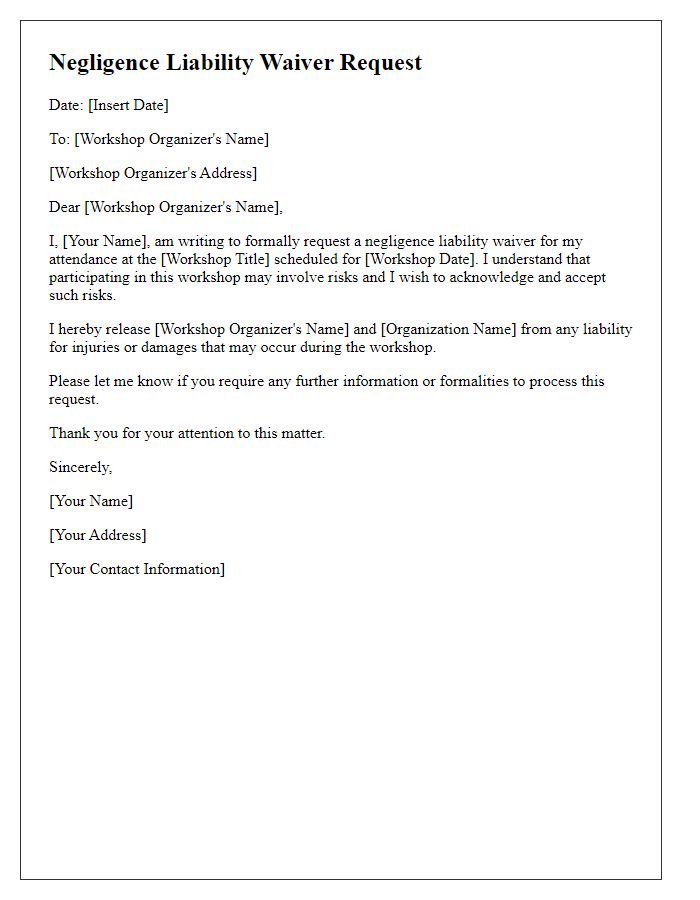
Letter template of negligence liability waiver request for recreational services.
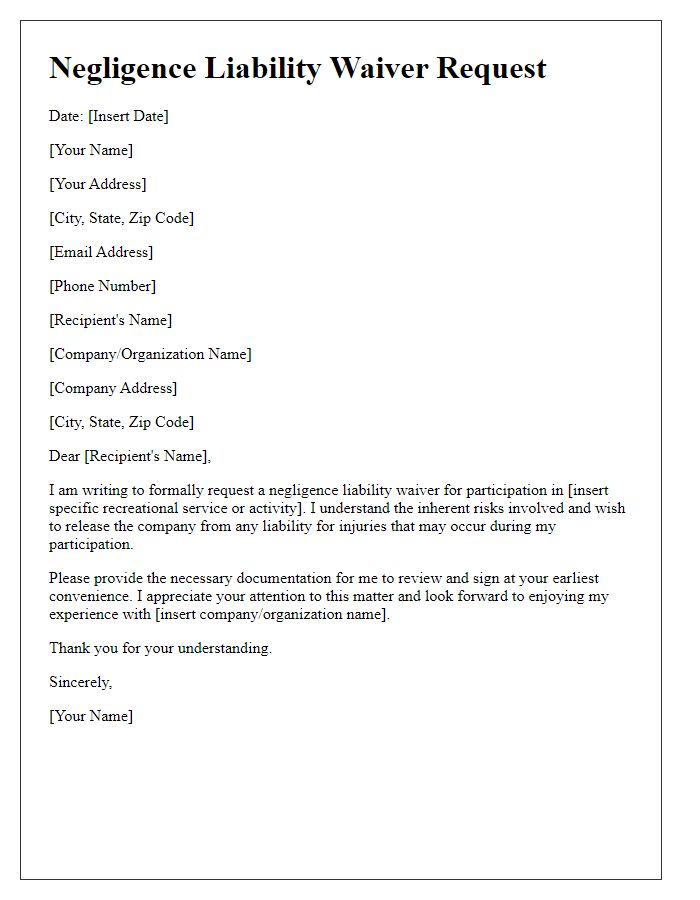
Letter template of negligence liability waiver request for outdoor group events.
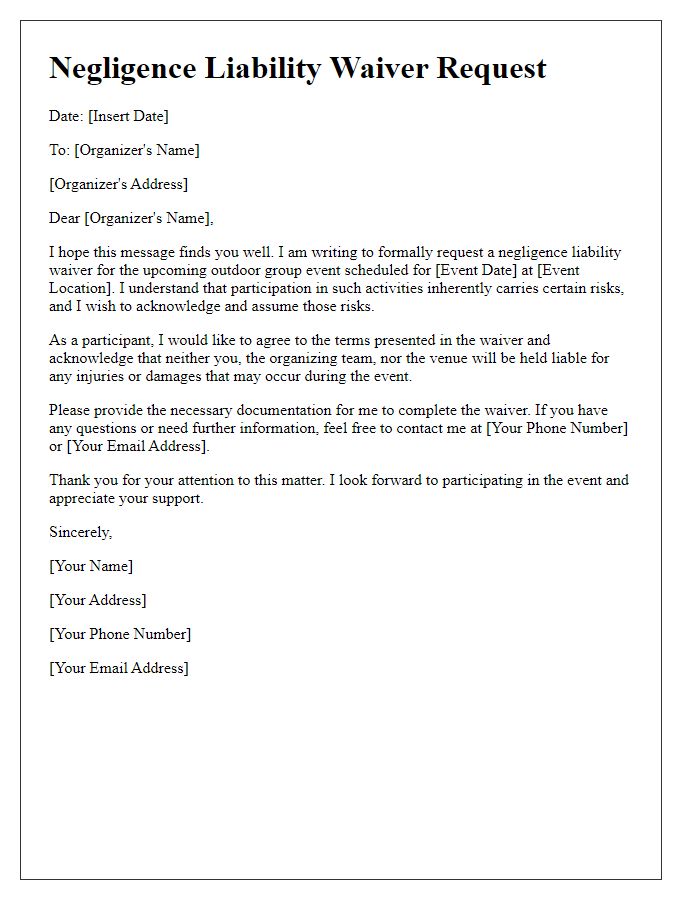
Letter template of negligence liability waiver request for training sessions.
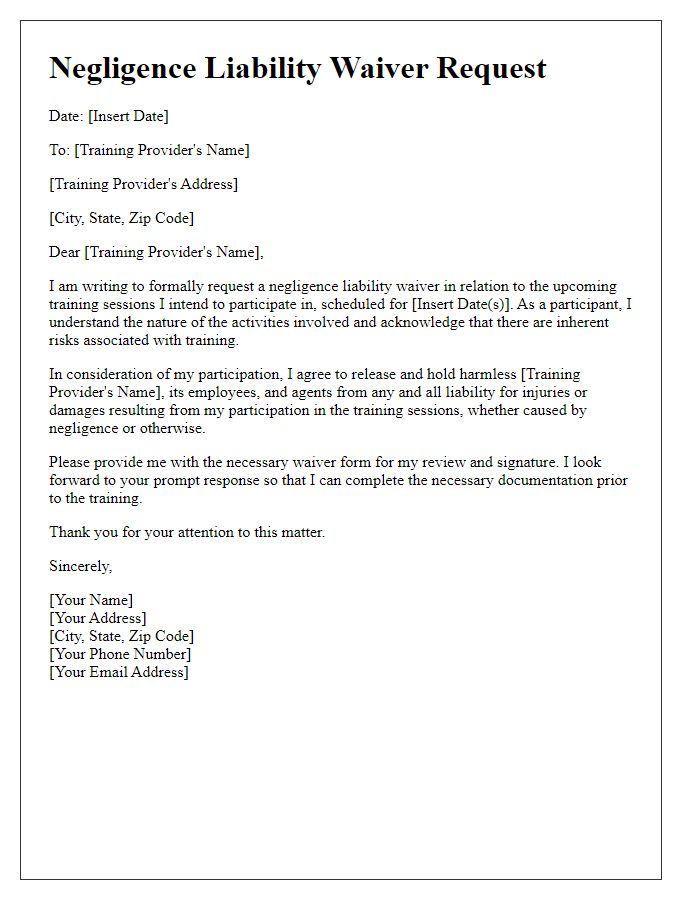
Letter template of negligence liability waiver request for school field trips.
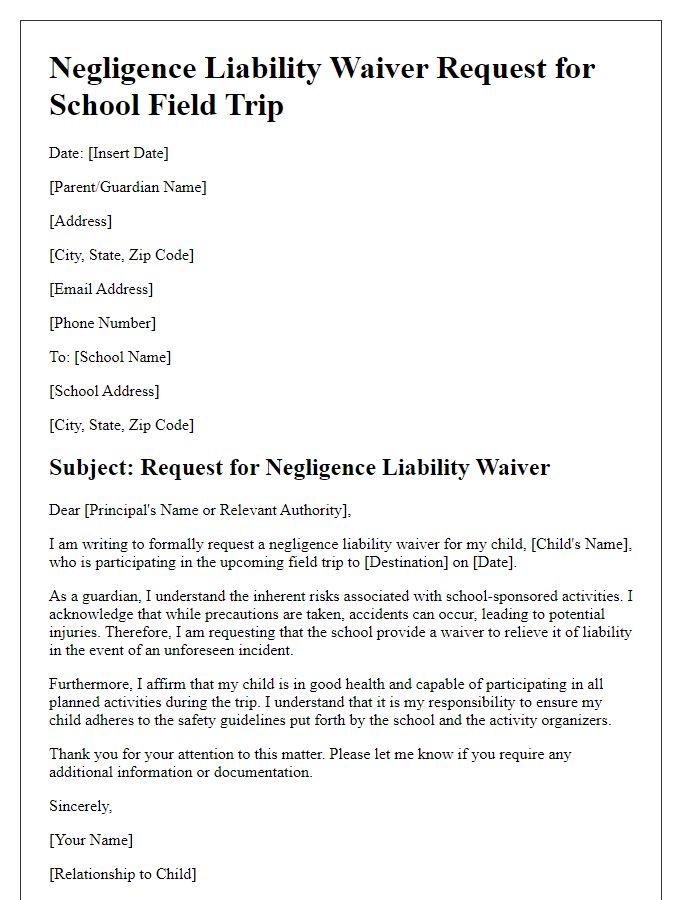
Letter template of negligence liability waiver request for fitness programs.
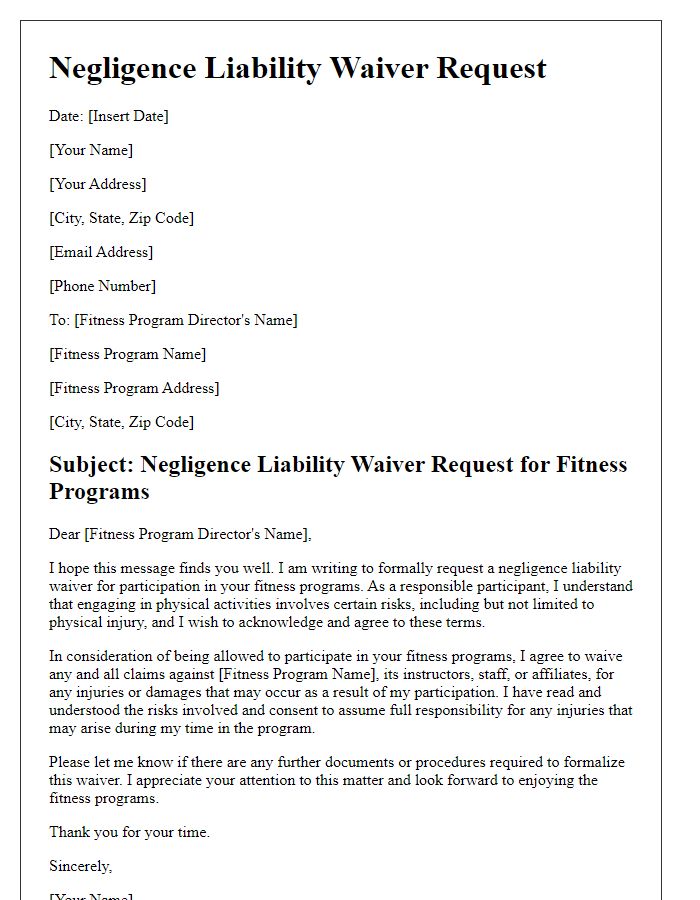

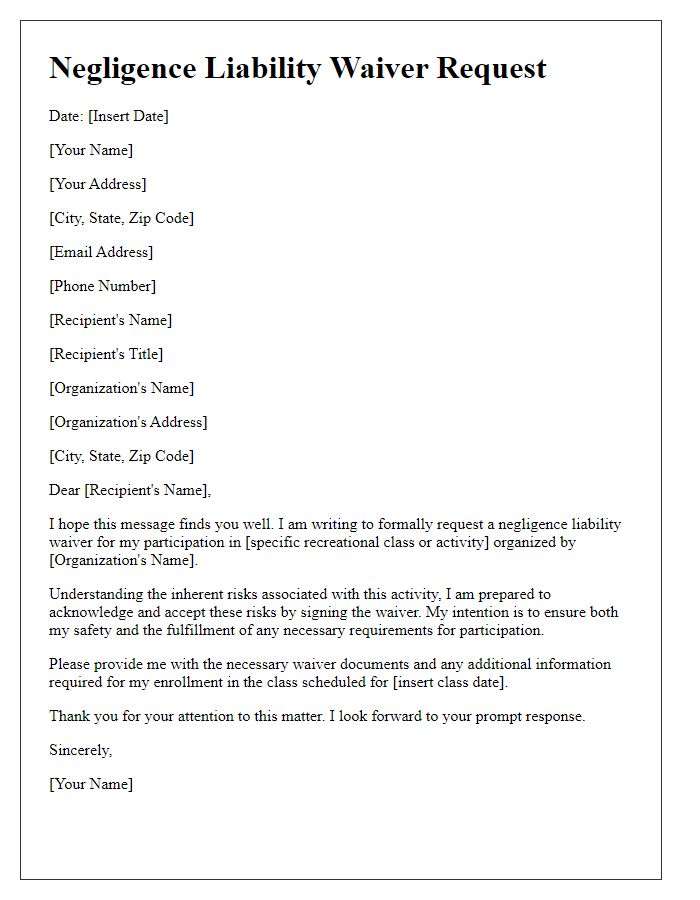


Comments